The 8 standout components of Shimano XTR M9100 groupset
A tour of the features within the redesigned mountain bike parts


Shimano’s XTR group has long been one of the lightest options on the market, offering world-class braking and shifting to riders trying to gain an advantage over the competition. The “R” is for race. When the company began developing the new Shimano XTR M9100, racing performance was the main priority. Mountain bike design has seen many changes during the past few years, so the new XTR marked a necessary opportunity for Shimano to show the world that it can remain competitive in the industry by offering lightweight, high-performance components for top-level professionals and consumers alike.
Rider input was a big part of developing the new components. Shimano works with some of the elite athletes in mountain biking, and called upon them for testing the new parts during research and development. As a result, the groupset features a complete redesign of its parts.

The standout update is the 12-speed shifting. But it also comes in 11. When Shimano asked its pro Enduro World Series racers if they would prefer a wider range 12-speed cassette versus an 11-speed cassette with closer gearing steps, the riders felt the closer gear steps—while allow for shifting—were more important for enduro-style riding. The weight savings on the 11-speed cassette compared with the 12 is 57 g. It’s not a crazy difference, but when you factor in the shorter chain and short-cage derailleur you run with the 11-cog cassette, the savings start to add up. Also with the smaller cassette and short-cage derailleur, you get less chain slap, a great feature for rough trails.
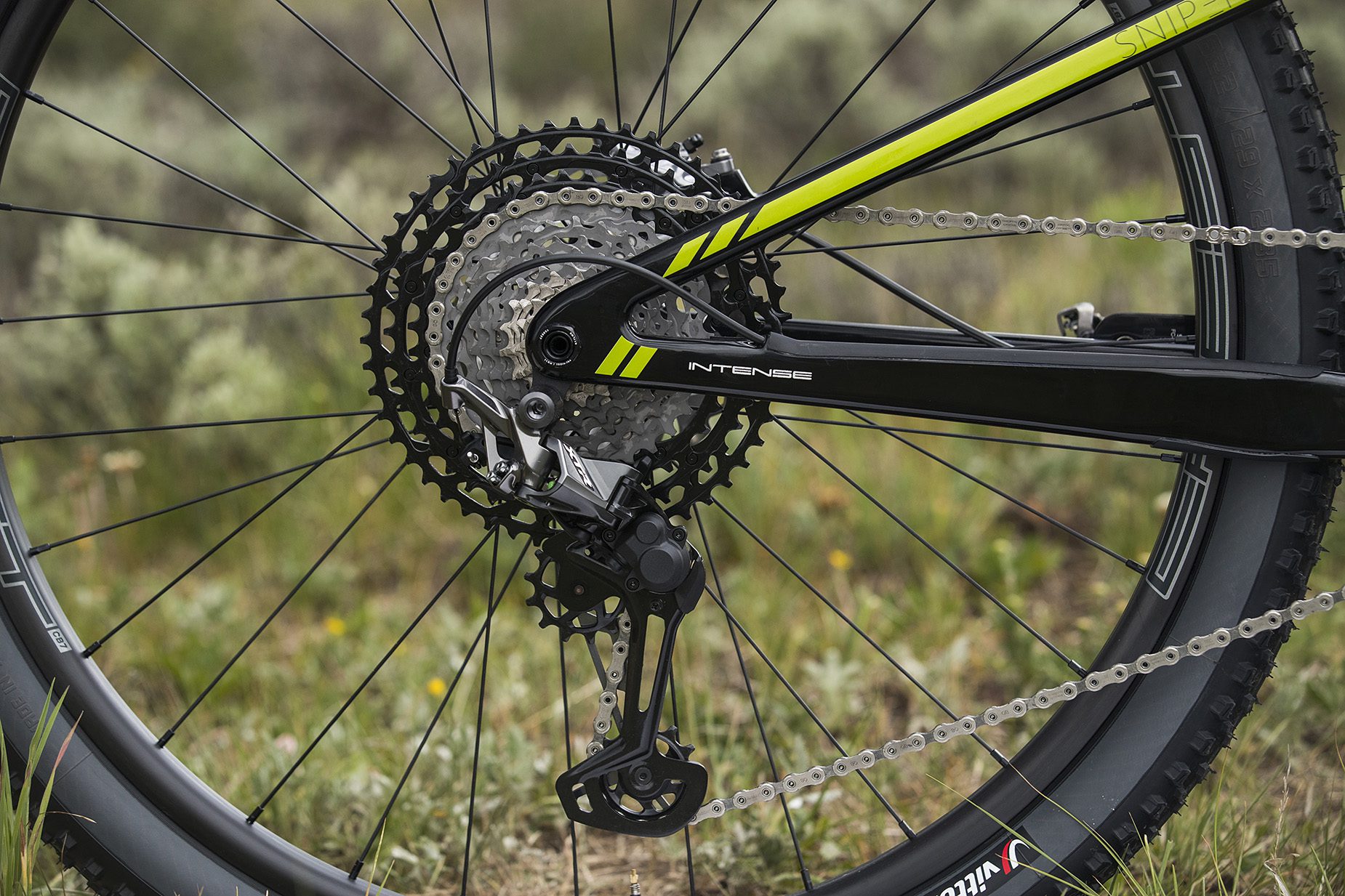
Coming in with 51-tooth large cog and a 10-tooth at the top end of the 12-speed cassette, Shimano heads past the 500 per cent club in gear range. The new freehub body designed to accommodate a 10-tooth cog will accept all three new cassettes (10–51 tooth, 12-speed wide range; 10–45 tooth 12-speed rhythm; 10–45 tooth 11-speed light) without having to switch shifters or use a spacer. The freehub is unfortunately not backward compatible with any other cassettes. The new cassettes also feature Shimano’s Hyperglide+ shifting ramps. I hesitate to use the term game-changer, but this shifting system is worthy of the title. Hyperglide+ ensures that when you shift gears the chain moves from one cog to the next in precise stages. It feels fluid to you, but the chain always has a secure hold. This means that you can actually shift under pedalling load. For racers in a sprint, you can now shift into harder gears while sprinting without the worry of slipping gears under power. It also means that on steep climbs, you don’t have to ramp up your cadence before switching into an easier gear. In practice, this really does work well. While riding the new group in Crested Butte Colo., I and my fellow testers were encouraged to shift gears under load. I never missed a shift as a result.

Sitting on the cassette and helping Shimano enter the 1-by dedicated-chainring game is the HG+ chain designed to work with the new Hyperglide+ cassette and XTR direct-mount chainring. The chainrings will be available in 30-, 32-, 34-, 36-,38-tooth options. For added peace of mind, Shimano has also designed a new XTR CD800 chain guide. The chainrings bolt onto the crankarm via a small lock ring. A specific tool will be needed for installation. Shimano has also opted to lose the two pinch bolts on the non-drive-side crank. The new crank has one bolt that threads into the 24-mm-diameter spindle. (Yes, the company is sticking with 24 mm.)

Moving the chain across a big range required a completely new rear derailleur. The new M9100 derailleurs come in two configurations. The GS supports a maximum 46-tooth capacity in a cassette. The SGS is made for the monster 51-tooth cassette and will work with the 46-tooth cassette, too. Shimano designed the new mechs to help alleviate chain tension in the bigger cogs and reduce overall drivetrain noise. They also have a clutch and adjustable tension via a small Allen bolt.
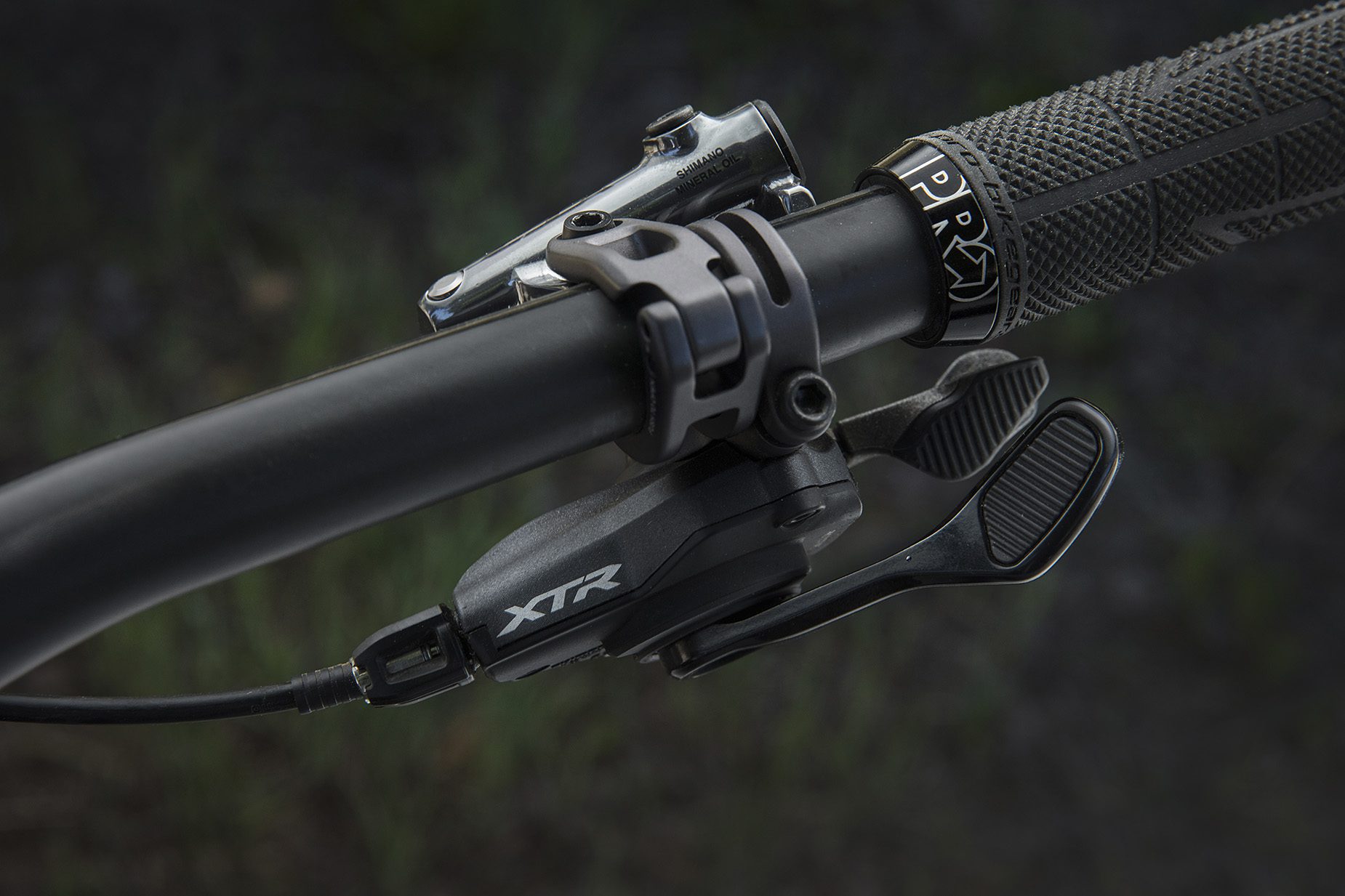
A new derailleur needs a new shifter. Cockpit customization and ergonomics were priority No. 1 when developing the new shifters thanks to more input from Shimano’s pro riders. The shift levers now have more room between each other offering faster changes. They also have a small patch of rubber moulded into the middle of the paddle, which gives the levers a solid high-end feel that your thumb won’t slip on. With one throw of the lever, you can shift up as many as four gears. The 9100 shifter can also shift down two gears with a single throw, but offers a much stiffer feel on the second shift helping to avoid over shifting. There is a small screw on the underside of the shifter that allows you to switch between 11- and 12-speed cassettes—one shifter for both cassette options. Also worth noting is the new I-Spec EV dropper remote. The lever is positioned much farther underneath the handlebar than many remotes. This arrangement means that you don’t have to move your thumb above the bar to activate your dropper post.
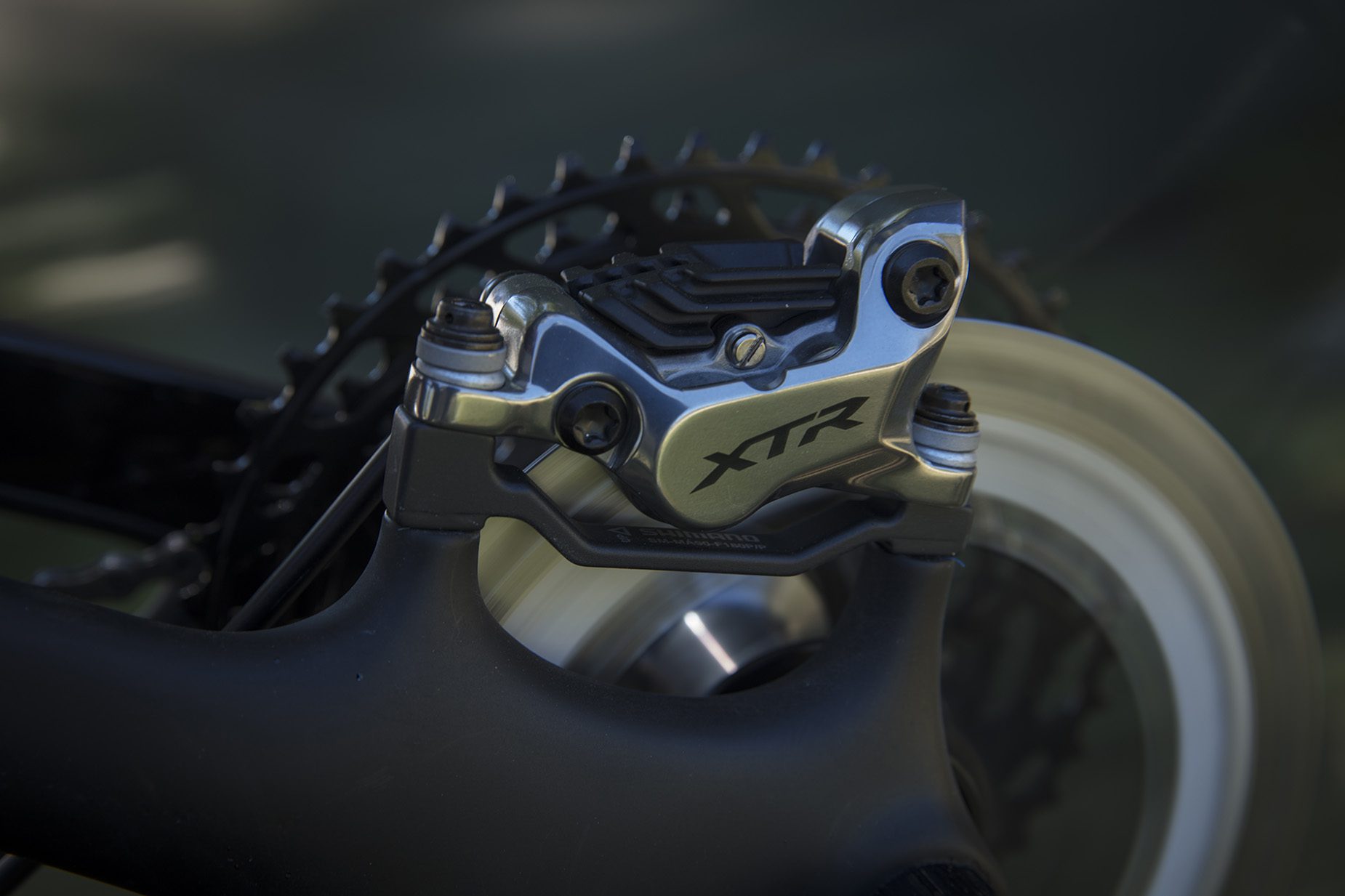
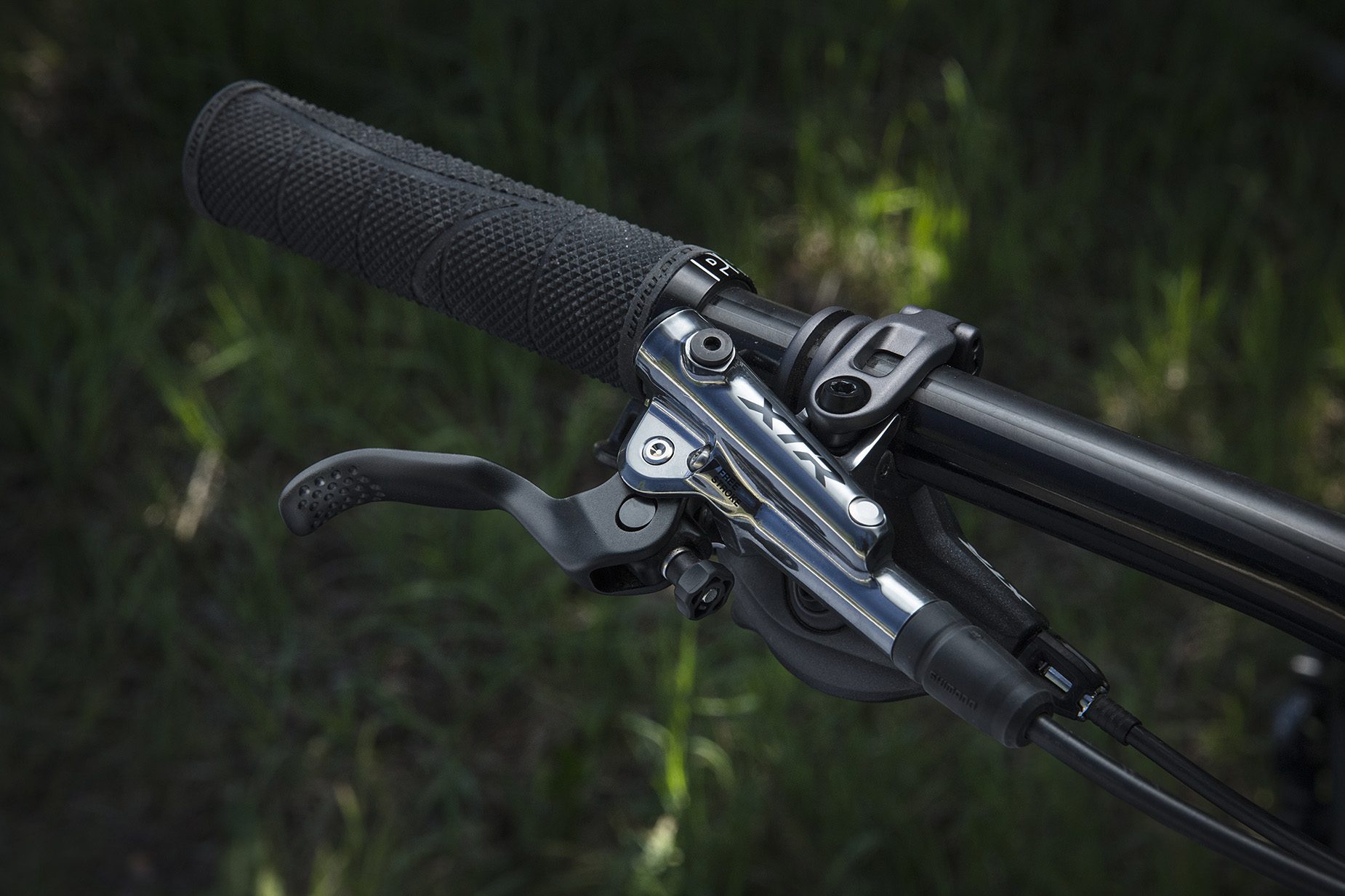
Since the new Shimano XTR M9100 is catering to both XC and enduro-type riding, the company really needed two different brakes. Both brake-lever positions at the master cylinder have been slightly re-positioned to offer a much stiffer lever feel. The XC version brakes have a magnesium body with carbon lever blade, paired to two double-piston aluminum calipers. The enduro version brakes are now a four-piston calipers paired with all aluminum master cylinders and beefier lever blades. The trail brakes also have a tool-less reach adjustment. New rotor and brake pads are on offer. The pads have tighter tolerances to avoid rattling in the caliper. The new larger rotors have better heat dissipation, while the smaller rotors focus more on lightweight design. All rotors are Centerlock only. Both metal and resin pad options are available.

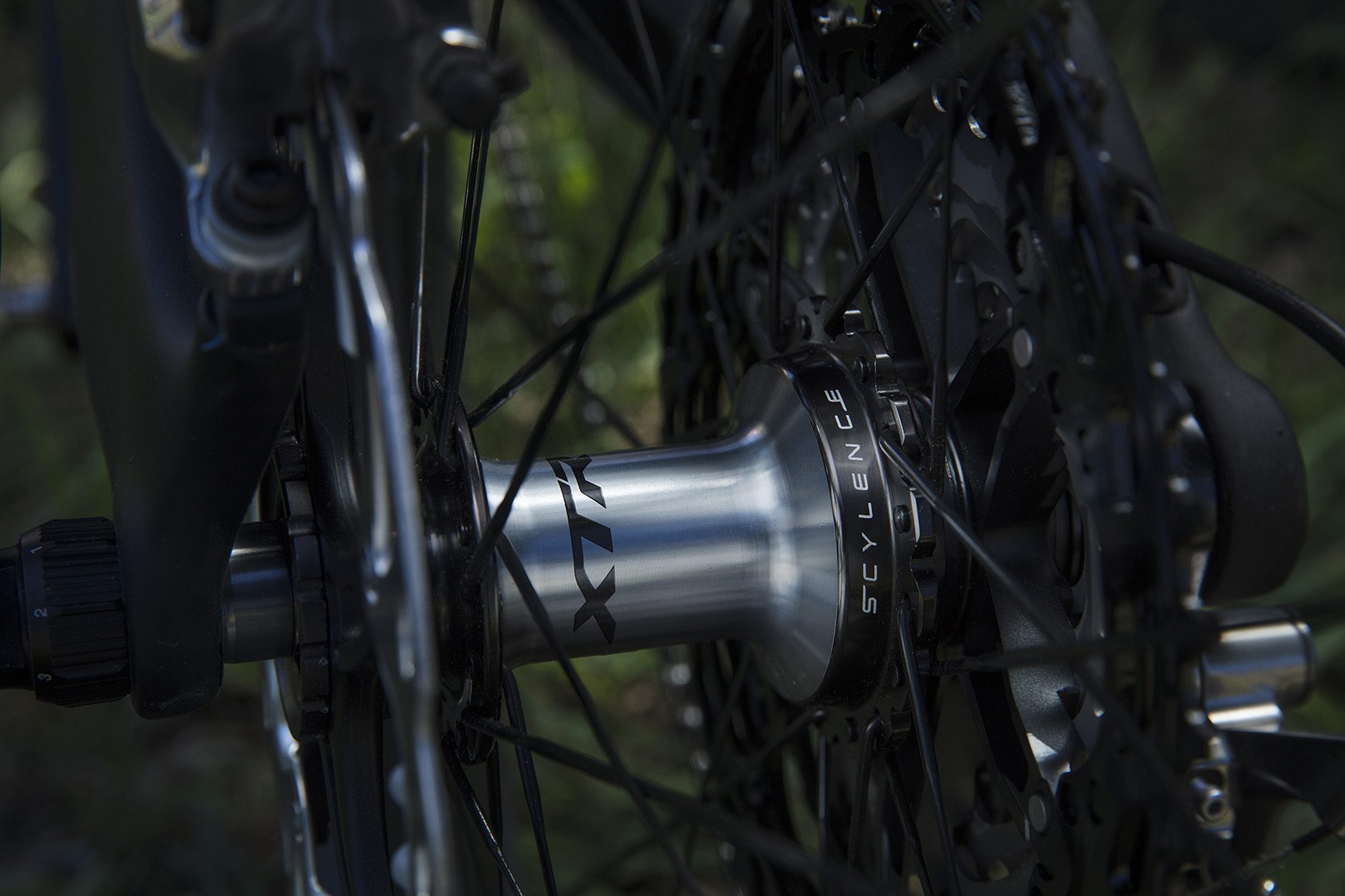
With the addition of a 10-tooth cog on the cassette, Shimano needed to redesign its freehub. It now uses a ratchet system instead of a pawl-type design. Shimano calls it the Scylence drive system for a reason. It’s pretty much silent when coasting. Sure a loud buzzing freehub has the same appeal as a barking muscle car, but when your bike is completely silent rolling down the trail, you can listen to your tires and gage traction like never before. The new freehub is attached to the new XTR hubs. Available in both standard and Boost spacing with straight-pull and flanged options, but not paired to Shimano rims. Instead, Shimano worked closely with DT Swiss, and will have OEM and complete wheelset options available soon. Expect to see the XTR hubs matched to several different rim options in the future.
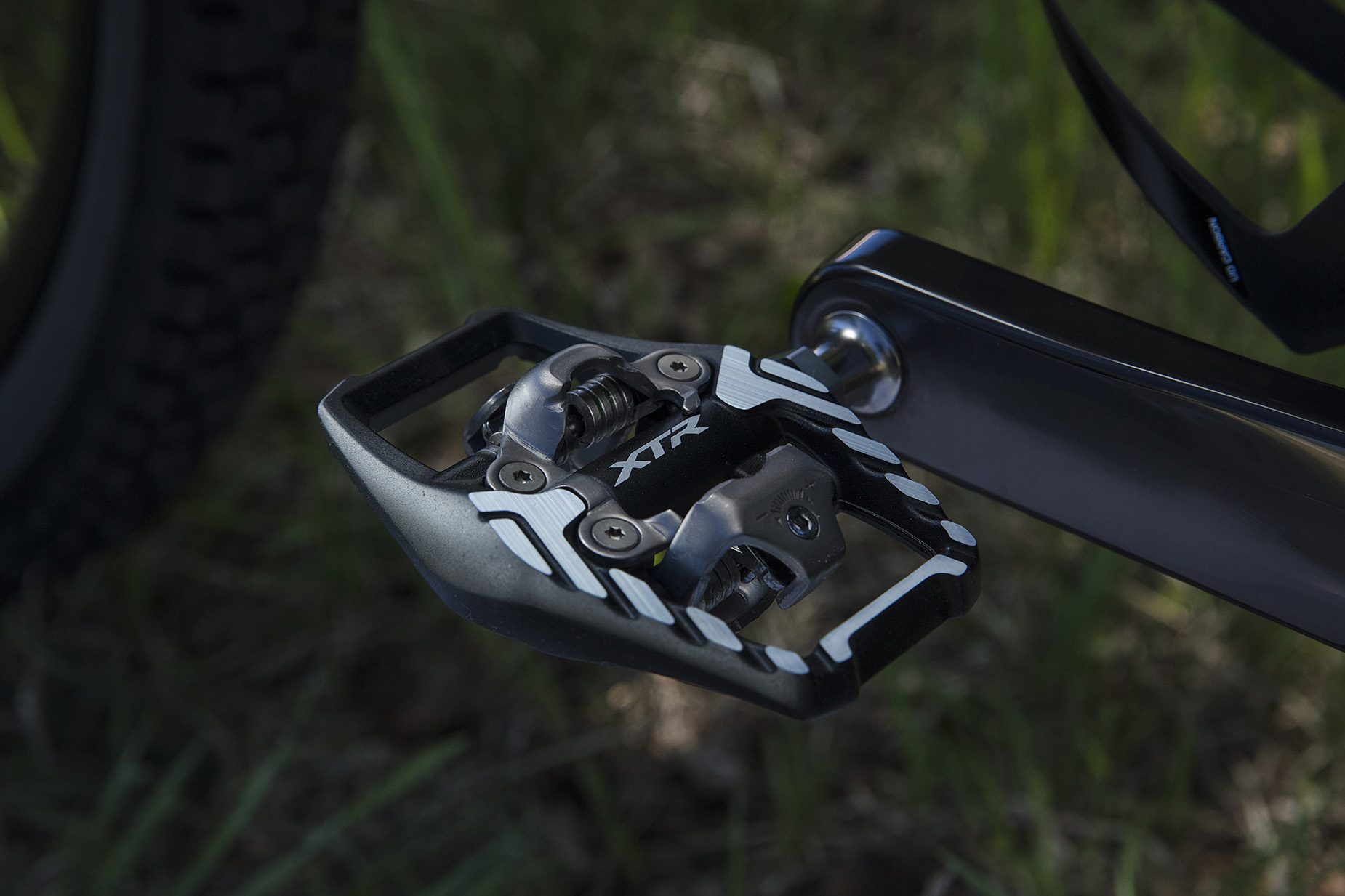
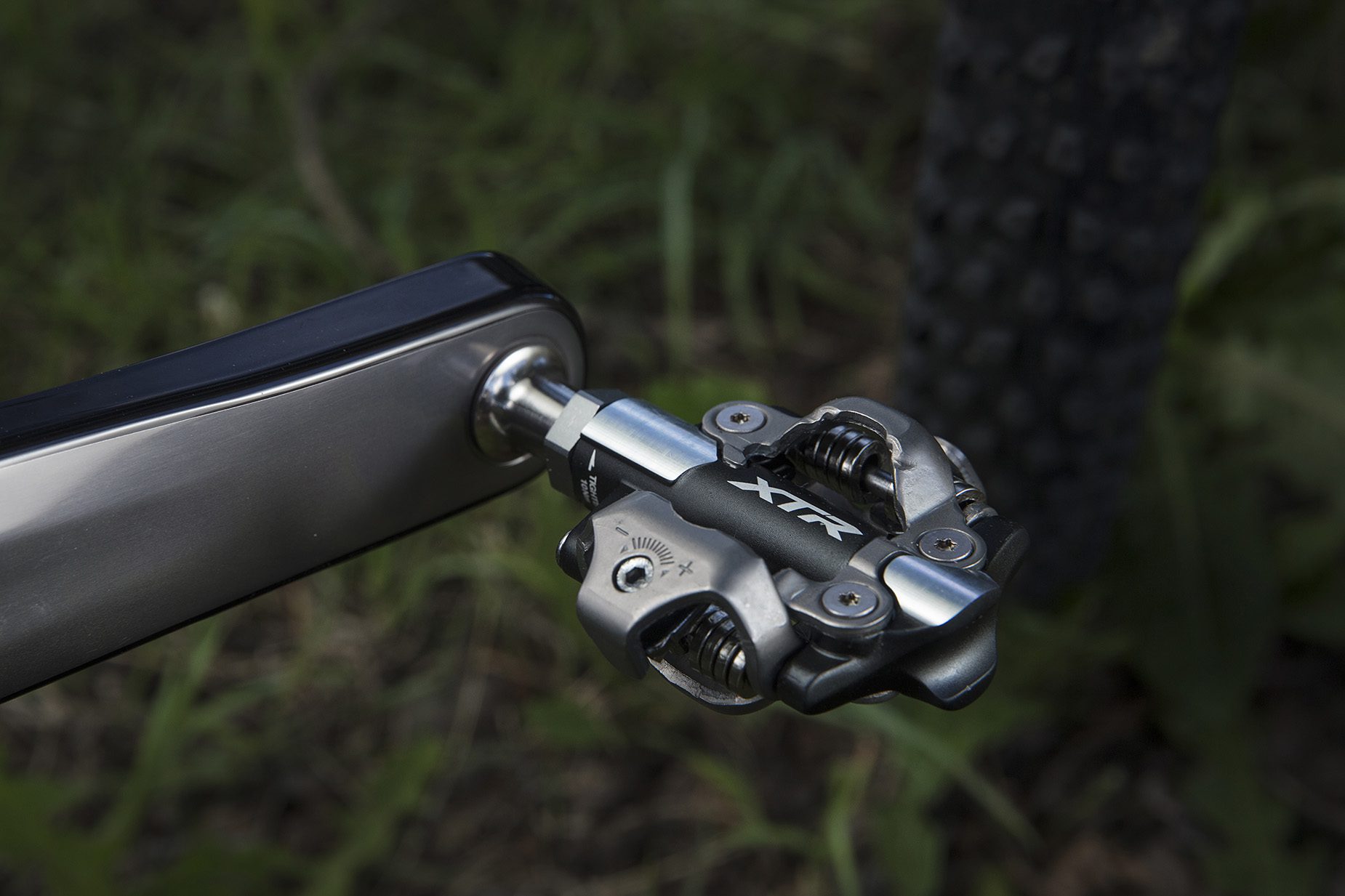
Shimano also gave a refresh to the XTR pedals. The trail pedal gets a wider and longer cage, while the XC pedal sees an increase in platform width as well. The PDM9100 and 9120 will be available in a few different Q-factors for the perfect fit.
But wait! There’s more.
Shimano decided to include a double chainring option for the new XTR crank, and also offer a new M9100 front derailleur and shifter to match. With the double chainring you get more range that the 1-by setup, and don’t have to take on too much weight.

